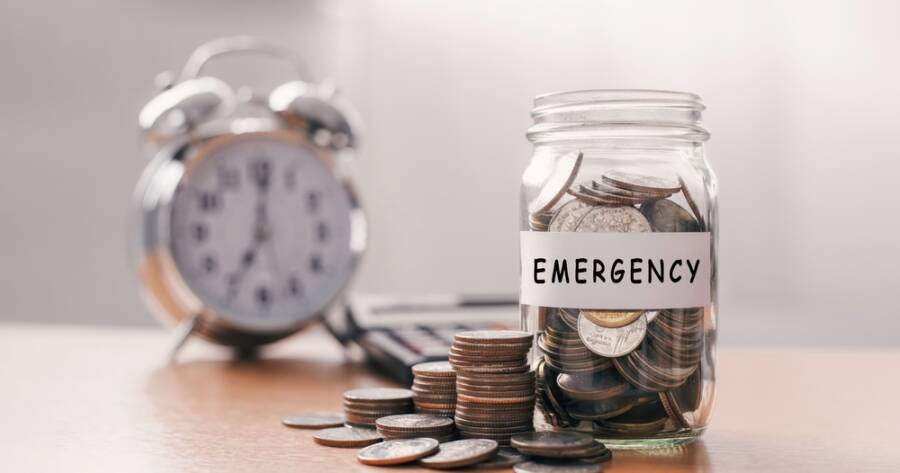Building an emergency fund may seem nearly impossible when every dollar is already stretched thin. Yet having even a small financial cushion can make a huge difference when unexpected expenses arise—like car repairs, medical bills, or a sudden job loss. The goal isn’t to save a fortune overnight but to take steady, realistic steps that fit your situation. With consistency and creativity, anyone can build a safety net that brings lasting financial peace of mind.
1. Start Small and Set Clear Goals
When money is tight, saving even a little can feel like a challenge, but starting small is better than not starting at all. Begin by setting a modest goal—perhaps $100 or $500—to create a sense of progress. Once that first goal is reached, aim higher. Breaking your savings into smaller milestones keeps motivation high and prevents the process from feeling overwhelming.
Consistency is more important than size. Try saving a fixed amount each week or month, even if it’s only a few dollars. Over time, those small contributions add up. Psychologically, watching your savings grow—no matter how slowly—can reinforce positive financial habits and inspire continued effort.
2. Reevaluate Your Spending
To find money for your emergency fund, take a close look at where your money is going. Tracking expenses for a month can uncover small leaks in your budget that add up over time. Subscriptions, takeout meals, unused memberships, or impulse purchases often consume more income than most people realize.
Once you identify areas to adjust, redirect that money straight into your emergency fund. For example, cutting out one $10 weekly expense—like a streaming service or an extra coffee run—could add over $500 to your savings in a year. The goal isn’t to deprive yourself but to make intentional choices about where your money goes.
3. Automate Your Savings
Automation can make saving easier and more consistent, especially when motivation wavers. Setting up automatic transfers from your checking account to a separate savings account ensures that saving happens before you have the chance to spend. Even a small automatic deposit—say, $10 or $20 a week—builds momentum.
Consider scheduling your transfers right after each paycheck hits your account. Treat your emergency fund like any other bill you must pay. Over time, this “pay yourself first” approach helps you prioritize saving, making it a regular habit rather than an occasional effort.
4. Boost Income Where You Can
If cutting expenses only gets you so far, increasing your income—even temporarily—can accelerate your progress. Look for simple ways to bring in extra cash without overwhelming your schedule. This might include freelancing, tutoring, selling unused items online, or taking on a few extra hours at work.
Some employers also offer programs like cash bonuses for wellness participation or referral rewards—small incentives that can directly feed your savings. The key is to direct every additional dollar you earn straight to your emergency fund rather than spending it on everyday items.
If extra work isn’t possible, consider creative swaps: carpooling to save on gas, sharing streaming accounts within household limits, or cooking at home instead of dining out. Each small choice can free up a bit more money for your financial cushion.
5. Choose the Right Place to Keep Your Fund
Your emergency fund should be easily accessible—but not too easy to dip into for non-emergencies. A separate savings account is usually the best option. Many online banks offer accounts with no monthly fees and competitive interest rates, allowing your money to grow slowly while remaining available when you truly need it.
Avoid keeping your emergency savings in your checking account, where it’s more tempting to spend. If you struggle with discipline, consider an account that takes a few days to transfer funds. This small barrier can discourage unnecessary withdrawals while keeping your savings available for genuine emergencies.
6. Use Windfalls Wisely
Unexpected money—like tax refunds, work bonuses, or cash gifts—presents an excellent opportunity to boost your emergency fund. While it may be tempting to spend that extra money immediately, allocating even half of it toward savings can make a meaningful difference.
These one-time boosts can help you reach your savings goal faster without affecting your regular budget. Setting a clear rule for windfalls, such as saving a set percentage, ensures that extra funds always move you closer to your financial goals.
7. Be Patient and Persistent
Building an emergency fund takes time, especially when resources are limited. The process may feel slow at first, but persistence pays off. Every small contribution represents progress toward financial independence and security. Life’s emergencies don’t wait for the perfect moment, so even a small cushion is better than none at all.
Remember, the goal is not perfection—it’s preparation. Even saving a few hundred dollars can help you handle unexpected expenses without going into debt. As your financial situation improves, continue contributing until you reach a more comfortable safety net, ideally covering several months of expenses.
Turning Small Steps Into Big Stability
Saving for emergencies when money is tight might feel daunting, but it’s completely achievable with consistent effort and smart planning. By starting small, cutting unnecessary costs, automating deposits, and putting extra income to work, you can create a solid foundation for future stability.
An emergency fund doesn’t just protect your finances—it protects your peace of mind. Each deposit, no matter how small, brings you one step closer to financial security and a greater sense of control over life’s uncertainties.




